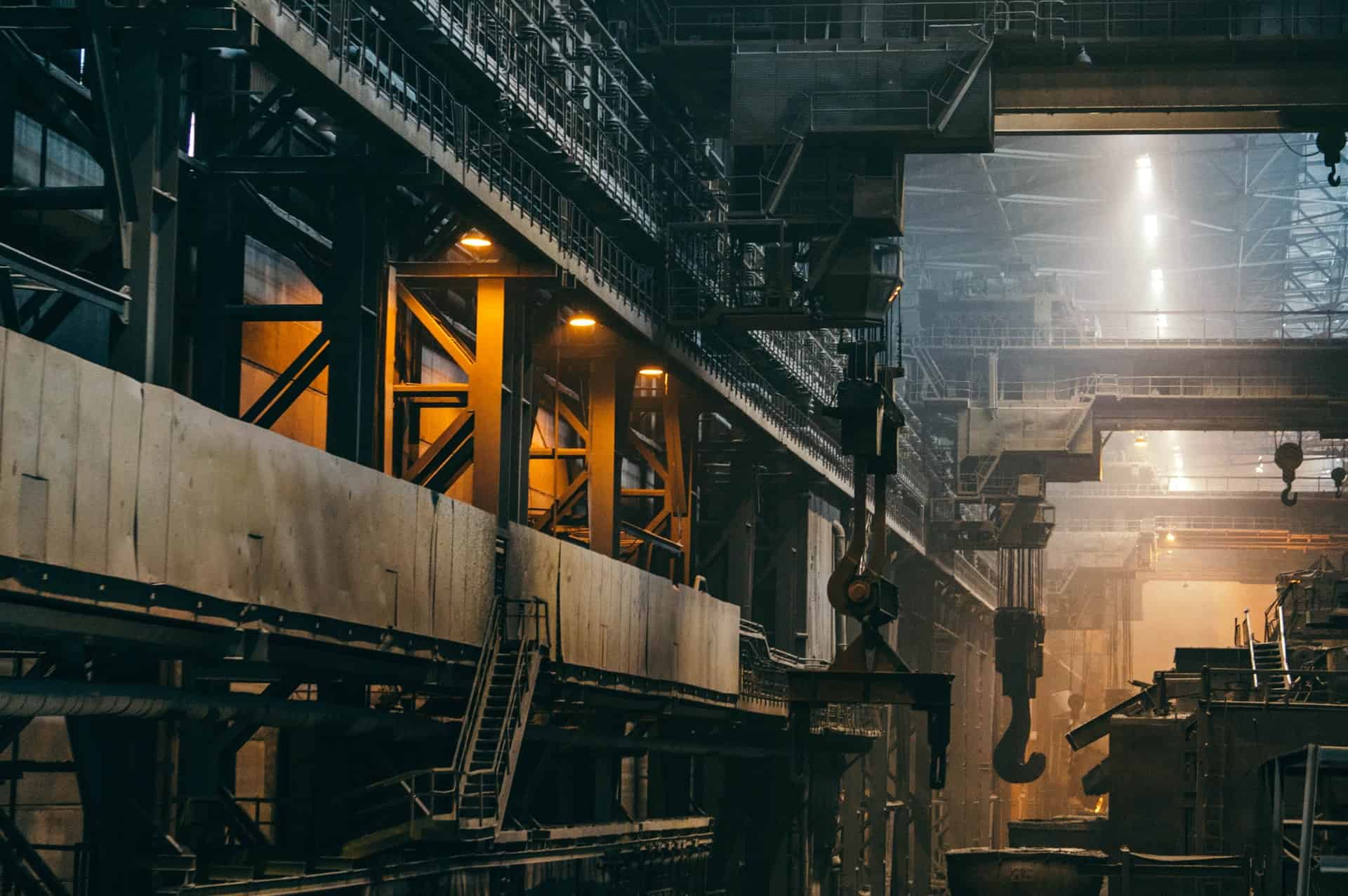



Revolutionized is reader-supported. When you buy through links on our site, we may earn an affiliate commision. Learn more here.
Of the industry 4.0 technologies transforming industry right now, one of the most important is the industrial internet of things (IoT) — internet-connected devices that businesses use to gather data, coordinate systems and control machines remotely.
Industry adoption of the technology has steadily increased over the past few years, and experts predict the market may be on track for major growth in the near future.
Because most manufacturers face growing pressure to accelerate production and become more efficient, many companies are looking to IIoT devices right now.
This is how industrial IoT (IIoT) technology is used today, and how businesses could use IIoT to transform industry in the near future.
At their simplest, IIoT devices are sensors, instruments or other pieces of technology that connect to the internet to share data, both to the cloud and with other IIoT devices.
What makes them “industrial” is their intended use-case and end-user — otherwise, the underlying technology and design principles are similar to consumer IoT devices.
A growing ecosystem of industrial smart technology — like IIoT platforms and IIoT gateways, which help connect industrial smart devices to the cloud — helps support these IIoT devices.
Some experts may also refer to industrial internet of things devices as “smart” industrial technology,
A wide variety of IIoT devices exist. Most devices currently on the market exist to collect data on industrial facility operations and monitor non-smart industrial equipment which may be otherwise difficult to monitor remotely.
The devices may also play an essential role in industrial automation, as they can help businesses gather information from and control non-networked operational technology — like conveyor belts, CNC machines and factory robots.
IIoT devices are capable of collecting a massive amount of information. This information can be of varying quality, and it’s not unusual for IIoT datasets to grow beyond the capacity for analysis by human data scientists alone or conventional analytic tools.
For this reason, many businesses adopt artificial intelligence (AI) and big data analytics tools at the same time as an IIoT solution.
These technologies allow businesses to more effectively clean and analyze the data that IIoT devices collect, enabling advanced applications of smart devices beyond simple monitoring operations.
People outside of industrial sectors may be more familiar with consumer IoT devices — “smart” technology like smart home appliances, smart assistants and wearables — than industrial IoT devices. The origin of IoT as a concept, however, actually comes from the industrial world and early innovations in process automation.
The technology has roots going back to the development of the programmable logic controller — a type of industrial computer that can receive data and send operating instructions — in 1968. What we would consider IIoT today, however, only began to emerge in the late 1990s and early 2000s, as it became easier and easier to connect physical devices to the internet.
Modern industrial internet of things history typically begins with the emergence of cloud technology in 2002 and the development of the OPC Unified Architecture protocol in 2006, which enabled remote communications between devices without the need for human intervention.
As a result, internet-connected devices could “talk” to each other, sharing information without human oversight, and also store gathered information on the cloud.
The combination of these abilities allowed for powerful, internet-connected devices that could transform both a business’s data-collection and operational technology systems.
IIoT technology is broadly applicable across heavy industry at large. There are IIoT solutions for almost every major industrial sector — including oil and gas, manufacturing, aviation and logistics.
Along with other Industry 4.0 technologies, like artificial intelligence and big data analysis, IIoT is playing a key role in a few ongoing industry transformations.
Right now, these transformations include automation, optimization, digitalization and the IT/OT convergence. With internet-connected sensors, instruments and devices, businesses can make these transformations easier.
Together, these changes are part of industry’s digital transformation, which will help connect existing systems to the web and digital tools.
Businesses use industrial internet of things devices in a wide variety of ways, depending on their particular niche and needs. In most cases, however, IIoT technology will be part of a bigger IT and OT system.
Businesses often use tools like IIoT platforms and gateways in conjunction with IIoT devices to coordinate these devices, track them and secure them.
The most advanced IIoT systems may also require AI and big data analytics to function properly.
These are three of the most important IIoT device use-cases right now, and how they may be on track to transform heavy industry.
With IIoT devices, it’s possible for factories and other industrial facilities to monitor equipment remotely. The IIoT devices can stream important information about equipment function to the cloud and to data dashboards, where managers can easily keep track of important site machinery.
For example, IIoT motion sensors may be used to monitor the movement of a conveyor belt. If the conveyor belt stops, the device or an IIoT management platform can alert site staff. The sensors allow for 24/7 monitoring of the belt, even if no one is on site.
More advanced remote monitoring systems may collect a wide variety of data on machine performance.
Existing IIoT solutions can track variables like temperature, vibration, machine lubrication and timing. Ultrasonic sensors can detect leaks. A combination of air quality, humidity, particulate and temperature sensors can allow a business to continuously monitor the environmental conditions of a workplace.
If any of these tracked variables leave safe bounds — a machine begins vibrating out of control or an air quality sensor suggests the workplace has become dangerous — an IIoT management system can automatically alert relevant staff.
In practice, the technology allows for quick responses to disasters as well as more efficient monitoring of essential industrial equipment. IIoT monitors can also store the data they collect on the cloud, allowing businesses to develop a database of useful information on machine performance and operations.
IIoT devices can gather data on a lot more than just machinery. Internet-connected GPS trackers and RFID scanners, for example, can be used to track the movement of objects around a site or through the supply chain.
Businesses can attach an IIoT tracker to an important item, like a pallet of goods or a valuable piece of equipment. The IIoT tracker can report location data either continuously, using GPS, or whenever the object moves from one location to another, using RFID. With this data, managers can both track objects and develop a picture of how the object moves around a facility.
This information can help managers pinpoint bottlenecks, facility layout errors and equipment misutilization.
With industrial IoT sensors that continuously monitor machine health, businesses can also implement a new kind of AI-powered maintenance strategy, called predictive maintenance (or PdM).
AI algorithms trained on machine performance data can learn to spot correlations between machine performance and failure. These algorithms can be more effective than a technician at identifying relationships between how a machine is operating and how likely it is to fail in the near future.
Predictive maintenance allows businesses to see failure coming, predict maintenance needs and identify optimal operating parameters.
Predictive maintenance has become an increasingly important tool for manufacturers who want to get more out of existing maintenance strategies. Research has found that PdM can offer major benefits for the companies that adopt it — including maintenance savings of 30 to 40% for businesses that rely on reactive maintenance and savings of 8 to 12% for businesses that rely on preventive maintenance.
Industrial internet of things technology plays an important and growing role in industry’s digital transformation. Alone, the technology can be used in a variety of ways, including for remote monitoring and asset tracking.
Combined with AI and big data analytics, the technology can go even further, enabling businesses to more accurately predict when their equipment will need maintenance.
As the technology improves, it may become an essential part of industrial operations, helping companies to more effectively manage mission-critical assets and unify operational technology with information technology.
Revolutionized is reader-supported. When you buy through links on our site, we may earn an affiliate commision. Learn more here.


This site uses Akismet to reduce spam. Learn how your comment data is processed.